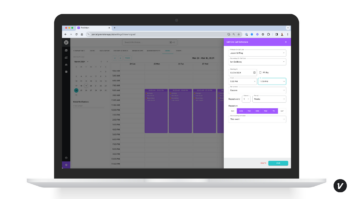Ask someone in the consumer electronics industry what they think the annual Electronic Entertainment Expo, or E3, trade show is and you’re likely to get a variety of answers. From some, the response will be the generic, “It’s the CES or CEDIA EXPO for the gaming crowd.” From others, the answer will be, “It’s the show that is the most fun of anything all year, mixing the high energy of new games, hardware and accessories with serious business.” Ask still others and the answer may be “It’s the noisiest show of the year and I only go because I have to keep up on the latest in the game industry.” The reality is that E3 all of those things and much more.



Photos from the E3 World Premiere of Microsoft’s Kinect for Xbox 360
This year’s event, held June 15-17, at the Los Angeles Convention Center, had more news and announcements than in recent years that should be of particular interest to the custom installation community. If you have any doubt about the place of games, particularly consoles and handhelds from the “Big Three” of Sony (PlayStation and PSP), Microsoft (Xbox 360) and Nintendo (Wii and DS/3DS), wipe those thoughts from your mind. For those of us who are hardware freaks, this was a banner year at E3.
In terms of an overall trend from E3 as it impacts custom installation and systems integration, the buzz words are “immersive games” and “motion-based” controllers with a healthy side order of 3D and online services. While the formal, go-to-market introduction of motion controllers from Sony and Microsoft in some ways mirror what Nintendo has done since it started the trend with Wii, each console uses a different means to reach something akin to the same goal.
Therein lies the critical news for anyone who installs games either in a grand-scale home theater, in a multi-purpose family room, or in the “kid’s room” that is often held up as the stereotype of a gamer. However, keep in mind that the average age of a console game player is well above that of the teen, so keep an open mind as to how these systems fit into virtually any client’s installation.
Motion Control from Kinect for Xbox 360
Since Nintendo was the first to use motion control along with the traditional button and joy-stick type controller, we’ll start there. Curiously, Nintendo introduced no new hardware for Wii this year, including the “Wii Vitality” sensor that was shown as a tease at the end of last year’s press event. Nothing new along the lines of the Motion-Plus attachment of Balance Board, for as we will detail later, Nintendo’s big news this year was in the world of handheld games and 3D. For now, stay the course for Wii, continuing to remember that in many installations you’ll need to use some creativity to deal with the Sensor Bar that is a key element of the Wii system, along with places to charge and store all the various remotes and accessories that have popped up to support Wii games.
If Wii was the first to do free-space activity and position sensing in video games, Microsoft will plow in with the most interesting entry in the space from a technology standpoint. The concept previewed as “Project Natal” at last year’s E3 will come to market as “Kinect for Xbox 360,” likely to be shortened by most to simply “Kinect.” In some respects, the final version is about as shown last year: a standalone accessory that contains an RGB camera to capture your image, a pair of “3D Depth Sensors” to determine your position in space and a microphone array that runs the full length of the product. As we look at the final version of the product additions include having the housing with the sensors and mics mounted on a motorized base that tilts to find the players, and the means of connection.
That’s where things begin to get interesting for the custom installation world. Take a look at any of the lifestyle images Microsoft has distributed, and you will note that the Kinect unit sits in front of, and below, the video display. Look more closely and you’ll see that all of these images do not have a center-channel speaker in the picture. Where, then, do you put Kinect in the installations we provide where there would almost always be a center-channel speaker, or, increasingly for smaller scale systems, a Soundbar or sound projector. Microsoft told us that the Kinect system is designed so that front- and center-channel sound does not interfere with Kinect, but what about the other way around?
As Kinect will not be available until November, at a price yet to be announced but rumored to be somewhere between $149 and $199, it’s too early to experiment. We’ll do that and report back later this year, but in the meantime, anyone planning an installation or system update that will incorporate an Xbox 360 and Kinect is advised to at determine if there are any specific limitations about how far below or above the screen a Kinect box can be, and when that leads to a sharp angle, what impact does that have in the distance from Kinect to the area of play. We were told that the unit can be mounted to a wall, but, again, caution is advised in determining where you place the unit.
Another aspect that should be of interest to designer/installers with Kinect is how it is connected to the console itself. When the console is the new 250Gb “Slim” unit announced at E3, Kinect attaches directly via a new, specialized connector. For all other Xbox 360 units going back to the very first, a “Y cable” provided with each Kinect will have one connector go to a USB jack on the Xbox while the other goes to a wall-wart type power supply. Not a big deal, but what if the client wants the gaming system with Kinect in a room where there is a retractable screen? Many clever solutions have been developed to solve this type of situation with the Wii Sensor Bar, including third-party wireless solutions between the Bar and the console. It remains to be seen how this type of installation plays out with Kinect.
From a capability standpoint, we also learned that Kinect should work in relatively low light levels, as might be found in the theater-centric room. That’s a good thing, as Kinect will not only be used with special games, but it will also expand Xbox’s video chat capability to include a simultaneous view mode for on-line content and movies that we’ve previously described as a real-life version of the old Mystery Science 3000 cable TV series: link up with your friends and watch a movie together, talking about it among the group as you go. When watching streaming movie content you can even gesture to Kinect in free space to control playback.
Of course, the core of all of this is gaming, so as with any “off the couch” system, make certain that your room design includes sufficient lighting the “play” area to allow for safe action with no one tripping to reaching out into the general seating area when they start punching, swinging or driving in free space. This is particularly important for “Dance Central,” “Zumba Fitness,” and the “Your Shape” fitness games that will have participants moving all over the place.
We’ll re-visit Kinect and how to integrate it into various room environments as its introduction date gets closer, but if the amount of publicity generated by Microsoft for Kinect at E3, including what must have been a massive spend to have Cirque du Soleil perform at a pre-E3 introduction event, it will be hard for anyone to avoid it, and one suspects that any gamer on your client list will want you to fit it into their home.
Sony’s “Move” System Splits the Difference
Lest this leave one to think that Microsoft was, if you will, “the only new game in town” at E3, the folks at Sony would be quite correct to differ. They, too, previewed an immersive control system last year at E3, and at this year’s event the formal plans were unveiled. We’ve known for some time that the product’s name would be “Move”, and now we know the introduction will be in September and unlike Microsoft, Sony has announced pricing.
If Kinect is a totally controller-free input device, and while Wii is dependant on hand-held controllers that communicate their position back to the console, Move could be considered to have split the difference between those two. The two essential components are the wand-like Move notion controller ($49.95) and the PS3 Eye Toy camera ($39.95 if the consumer hasn’t already purchased one with another game). Not critical, but helpful in allowing for fluid control is the hand-held Move navigation controller ($29.95). Thus, at the end of the day, each player has a controller-like device in each hand, as with Wii, but rather than having the Wii Sensor Bar serve to facilitate screen-to-player distance, the Eye Toy does that along with being able to place an image of the player into the game. Kinect does that, Wii cannot.
The combination is very effective in getting the player into the game, and the 15 titles that will be available at launch in North America on September 19 run the gamut from sports to role playing to children’s titles to PS3 franchise favorites such as SOCOM. All are superb in integrating the “off the couch” movement with camera imaging and the same caveat about allowing for game space allows. This will be particularly true with “The Fight,” a boxing game that will have players right at each other in no time at all.
At the same time as it was promoting the availability of Move, Sony went Microsoft one better with their formal announcement of 3D games. The upgrade for PS3 that allows 3D gaming, of course with a 3D display, has been available since April, and now there are games to play. Four are available for download now from the Playstation Network, with others to come via traditional discs as the year progresses. If you need to show the impact of 3D on a potential client there will be no better demo material than “MLB ’10” or “Gran Turismo in 3D.” Even better, some of the 3D games will also be designed to take advantage of the Move system, including “PAIN” and, in 2011, “Killzone 3.”
Completing a hat trick, PS3 will not only be able to provide 3D gaming and the impressiveness of the Move Controller and Eye Toy camera, the console will also support play back 3D Blu ray movie discs at some time this year, though the date for the upgrade’s availability was not announced at E3. A research study released by CEA during indicates that interest in 3D games extends beyond gaming enthusiasts and early adopters to so-called casual video gamers, as well. With Microsoft making no mention at all about 3D at E3, it will be interesting to see how Sony capitalizes on their combination of Move, 3D and 3D movie playback with PS3.
No Hardware Additions for Wii
If all the news from two of the three console giants about how they will match, what the third, Nintendo, has done all along with Wii, makes you wonder what the first to market would do to compete, the answer is interesting. Although Nintendo announced the usual raft of new game titles, their presence at E3 this year was interesting in that there was no addition to the hardware line-up. Even the “Wii Vitality” sensor previewed at the end of last year’s press event was no where to be seen. One can only presume that Nintendo sees their solution as getting it right from the start with their core gamer audience satisfied with the game play in 480p resolution in comparison to the HD video and 5.1 discrete audio for PS3 and Xbox 360.

In this photo provided by Nintendo of America, Shigeru Miyamoto, Nintendo video game designer, shows off “The Legend of Zelda: Skyward Sword,” an upcoming game for the Wii console which features the Wii MotionPlus accessory, during the companyís presentation on the opening day of the 2010 E3 Expo, on Tuesday, June 15, 2010 in Los Angeles. (Casey Rodgers/AP Images for Nintendo of America)Instead, the big news from Nintendo at E3 was the introduction of their “3DS” handheld. Truth be told, this is not Nintendo’s first foray into 3D, as they tried it some years ago with Virtual Boy, but the technology wasn’t quite ready for prime time; 3DS is – although since the introduction date (and price) were not announced, we still don’t know exactly when that time is. One has to presume before the “holiday selling season”, but that’s it.
The auto stereoscopic 3DS uses a combination of technologies to deliver 3D without glasses, though many have described the 3D effect as being more background depth than the total immersion of big screen 3D. Keep in mind, however, that 3DS is a small-screen hand held device, not a 1080p large screen display! It remains to be seen if the inevitable added cost is deemed worthwhile by the handheld community; something only time will tell.
The note of interest here is that the publicity for 3DS as a glasses-free 3D product will inevitably raise questions from your clients as to when they’ll be able to shuck the glasses current required for flat panel displays and projection for 3D. To be blunt, the answer is “not anytime soon”. Don’t let 3DS cause confusion or give someone sitting on the fence about a large screen 3D installation an excuse to sit it out on 3D. All evidence points to the need for glasses to deliver large screen TV for at least five, to perhaps ten or more years. The technology just isn’t practical, if there at all at this time, for auto stereoscopic video in the home. For now, it’s something for hand-held devices and rare technology displays only.
In what some continue to call a troubled economic environment, E3 continues to be a vibrant show, coming back from close to fading into oblivion only a few years ago. With that, the video game world itself continues to grow in importance and the new products and concepts shown this year deserve your attention as a means of properly growing your business, as well.







